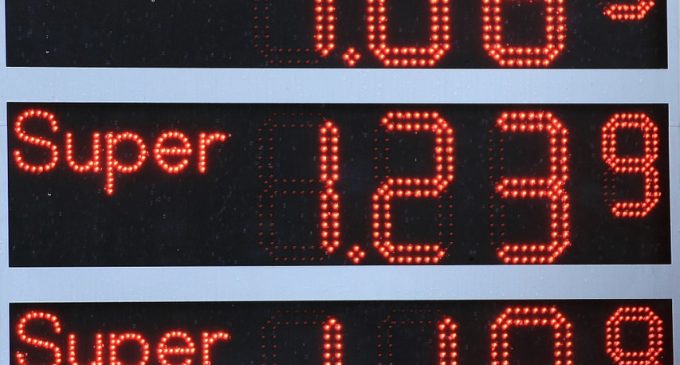Bord Gáis Energy Index drops 7% in June, as oil, gas and electricity prices continue to fall

The Bord Gáis Energy Index fell 7% in June and is 5% lower than the same period last year. June saw a broad drop in wholesale energy markets as oil, gas and electricity all registered falls – coal was the only exception with a 2% gain. A stronger euro over the month versus both sterling and the dollar also affected energy prices. In June 2017, the Bord Gáis Energy Index stood at 81.
Oil dropped 6% this month as disappointment at the level of OPEC production cuts continued to weigh on prices. Wholesale gas prices were lower by 12% – Prompt gas prices swung sharply over the month due to the unavailability of a key infrastructure pipeline while electricity prices were 7% lower in line with lower gas. Coal was the exception, registering a 2% gain.
Commenting on the latest Index, Darragh Crowley, Energy Trader with Bord Gáis Energy, said: “The Bord Gáis Energy Index continued to fall during June, and is lower year-on-year for the first time in 2017. Market reaction to the OPEC deal extension, coupled with expected production increases by the US and Canada, have seen oil prices take another hit. There may well still be a recovery for oil, and indeed across the board, towards the end of 2017, but this is heavily dependent on North American and OPEC activity.”
Oil
The recent downturn in oil prices continued in June as Brent crude oil settled the month at $47.92 per barrel, a 6% drop in euro terms from the May close. Brent crude has in fact had its worst first half of the year since 1998, with the global benchmark falling 22% in the first half of 2017. This follows from the OPEC and non-OPEC agreement to extend oil cuts until March 2018, an extension of their original deal brokered in November 2016 to ease the glut of oil inventories.
To offset cuts, the U.S. shale industry has increased production by almost 550,000 barrels a day since the end of November. Additionally, Canada which has the third largest oil reserves in the world, looks set to increase output by 270k barrels per day (bpd) in 2017 and a further 320k bpd in 2018. The combined increase would equal almost one third of the OPEC and non-OPEC production cuts.
Gas
The NBP day-ahead contract, the price for gas delivered tomorrow, averaged 34.8 pence per therm in June, a drop of around 12% on the May average of 39.2p/th and 3% lower than the comparable period last year.
The average outturn figure, however, tells only part of the story as prompt prices swung sharply over the month due to the unavailability of a key infrastructure pipeline. The UK-Belgium interconnector, a natural gas pipeline between Bacton in the UK and Zeebrugge in Belgium, was down for maintenance during the second half of the month. Once maintenance commenced in the middle of the month, the exit route for excess gas in the UK system was unavailable and prices hit a low of 25p/th. These lower prices incentivised an increase in medium-range storage injections, which helped prices recover.
Coal
Coal prices trended higher during June, finishing the month 2% higher at $79 per tonne, an increase of over two dollars on May’s closing price of $76.55 per tonne.
President Trump’s decision to withdraw from the Paris climate agreement was cited by many as evidence of his desire to revive the US coal industry. At campaign rallies throughout key battleground mid-western states, candidate Trump promised followers that he would “end the war on coal and put coal miners back to work”. Coal use in the US has been in decline for over a decade, falling an additional 9% in 2016.
This rhetoric is misguided however – the decline of coal is caused by falling natural gas prices as a result of the fracking revolution, stagnant power demand and decreasing renewable costs, rather than any emission reducing measures imposed on the industry.
Toward the end of the month we saw reports that China, the world’s largest consumer of coal, intended to ban imports of coal at small ports from July. The latest move by the country to curb coal imports.
Electricity
The average wholesale price of electricity was lower by 7% in June. Irish wholesale electricity prices typically tend to track the cost of imported gas as it is the most significant cost in the production of electricity. However, it can vary on a month to month basis.
An average monthly clean spark of approximately €7.76/MWh was recorded in June, which decreased 8% from the €8.44 observed in May. The proportion of demand met by wind in June was 29.75%.
FX
The euro strengthened in June versus both the dollar and sterling. The single currency climbed 2% versus the dollar to reach $1.1413 and was 1% higher against the pound settling at £.8774.
Signs that the European Central Bank (ECB) may put an end to the era of easy money by raising interest rates helped the euro to gain value in June. The renewed euro strength is also a financial manifestation of relief felt over the rejection of nationalist, anti-EU candidates in France, Austria and the Netherlands. The ECB president Mario Draghi said that the Eurozone was headed towards “reflation” which buoyed the single currency.
The weakness in sterling since Brexit means that the Bank of England (BoE) may be inclined to act to remove monetary stimulus in a bid to shore up the currency. Data increasingly shows that falling real wages and inflation are outweighing any benefits of a weaker currency. The BoE governor Mark Carney signalled at the end of June that he may lift interest rates if business investment rises.


























